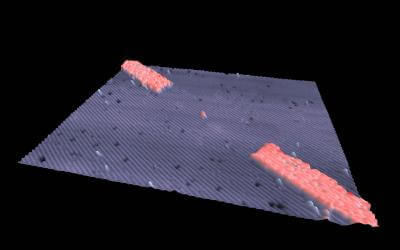In an unprecedented achievement in the field of microengineering, physicists have succeeded in producing an active transistor consisting of a single atom located inside a silicon crystal

Dr. Moshe Nahamani
In an unprecedented achievement in the field of microengineering, physicists have succeeded in producing an active transistor consisting of a single atom located inside a silicon crystal.
The tiny electronic device, about which we have just learned in an article published in the prestigious scientific journal Nature Nanotechnology, uses a single phosphorus atom located between electrodes and atomic electrostatic control gates as its active component.
This unprecedented atomic precision may lead to the development of the basic building block for the future quantum computer, a computer with unrivaled computing efficiency. Until now, researchers have encountered single-atom transistors only by chance, having to search for them among many devices or tune different multi-atom devices in order to isolate the one that will work properly.
"But our device is perfect," says Professor Michelle Simmons, head of the research group and director of the Center for Quantum Computing and Communications at the Australian University of New South Wales. "This is the first time anyone has ever demonstrated control over a single atom in a material with such incredible precision."
The microscopic device even has tiny, visible connections anchored to its surface so researchers can add metal connections and run an electrical voltage through them, says one of the researchers. "Our research group proved that it is indeed possible to place a single phosphorus atom in a silicon environment - exactly where we need it - with almost atomic precision, and at the same time create gates," says the researcher. The device is also noteworthy in light of the fact that its electronic properties correspond exactly to the theoretical predictions made before by other research groups that participated in the project.
The team of researchers used a scanning tunneling microscope (STM) to observe the atoms found on the surface of the crystal in the ultra-high vacuum chamber and move them as needed. With the help of a lithographic method, the researchers were able to embed phosphorus atoms inside the crystals of active devices and in the next step cover them with an inactive layer of hydrogen. These hydrogen atoms were selectively removed from specially defined areas of the crystal with the very tiny metal tip of the microscope. A controlled chemical reaction that occurs in the next step incorporates the phosphorus atom into the silicon surface.
Finally, the entire structure is sealed with a silicon layer and the device is electrically connected through a complex system of aligning connections located on the silicon chip to adjust the metal connections. The electronic properties of the device corresponded to an excellent level with the theoretical predictions for a transistor based on a single phosphorus atom.
It is expected that transistors will be based on the level of a single atom as early as 2020, in order to align with Moore's Law which refers to the ongoing trend in computer hardware, a law which states that the number of chip components doubles every 18 months. This significant advance accelerates the possibility of developing the technology far ahead of the expected schedule and contributes valuable insights for the manufacturers regarding the operation of this type of device, explains one of the researchers.
A video describing the discovery

12 תגובות
Husham, this is the emerging trend.
At the beginning of the computing age there was a central computer to which terminals were connected, with the cheapening of technology and the need for many hours of computing, the personal computer spread.
Now with the increase in internet connection speed and the desire of companies and individuals to use software over the internet and save things in different physical places (cloud computing) we are going back down the evolution to a central computer.
Not bad at all
heat
Pretty.
And in a certain evolution, this chip will be called a brain.
Just a thought
Everyone today has 2 or 3 IPHONE chips, a computer at work and a computer at home or a television or a Sony PlayStation, etc.
If there is one very powerful computer that provides service let's say 1000 such chips
So at some point the trend will reverse and the number of chips will decrease over time.
simply incredible !!!
(Did someone say singularity?)
I am designing a computer based on black holes
The accuracy is amazing, the level of accuracy is amazing...
I actually liked the 'Quakers' more.
I already have such transistors in my closet :o)
quarks***
Yes it will be built of Quakers lol
Very strange to me! After all, at such sizes (actually already from a size of about one nanometer) the quantum effects are no longer eliminated, in fact in a single atom they are already so dominant that I would not trust the apartments of such a transistor. It will have 'tunneling' phenomena - and 0 can be read as 1 and vice versa.
There is still a lot to go down in terms of size…
http://images.4channel.org/f/src/589217_scale_of_universe_enhanced.swf